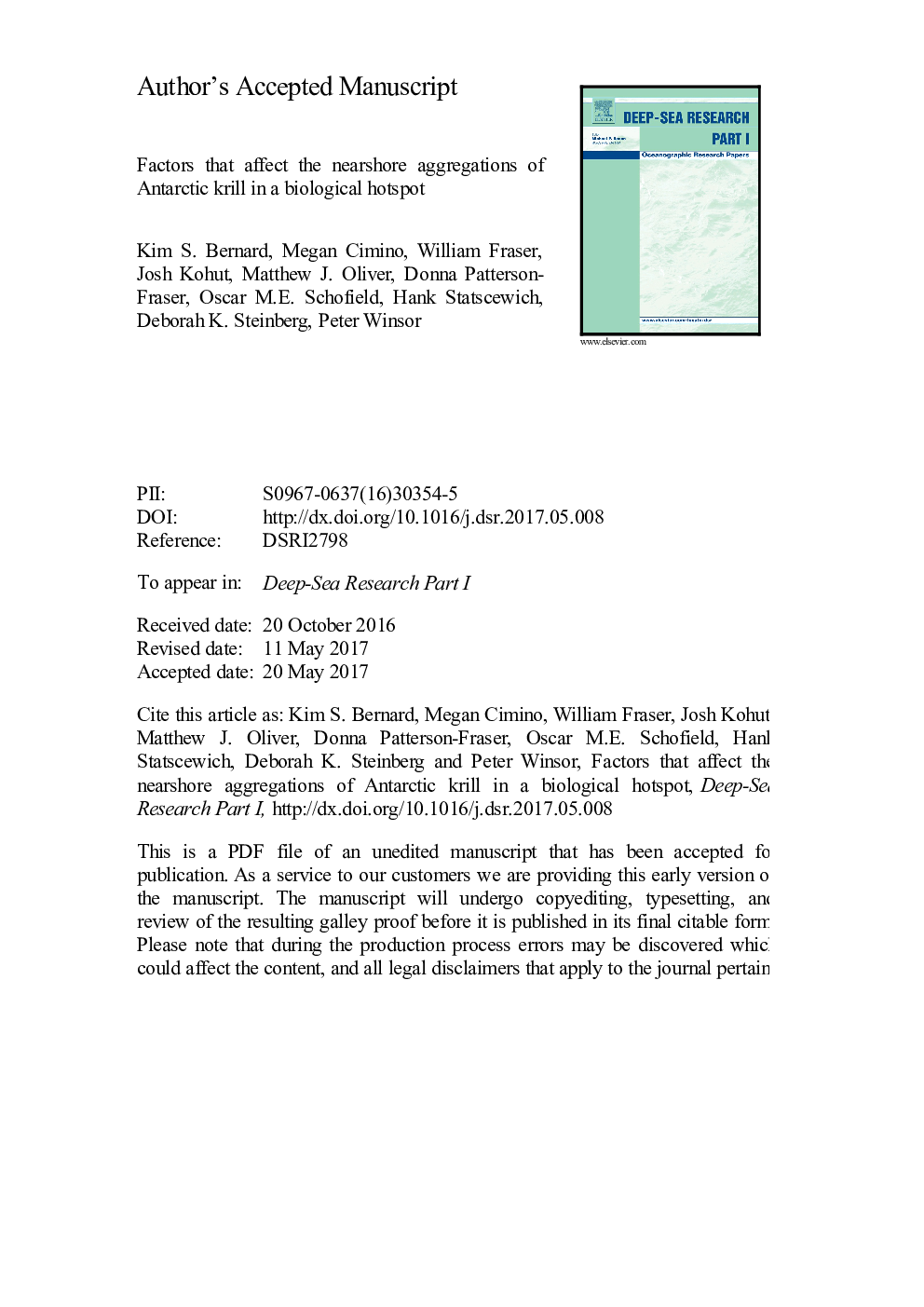| Article ID | Journal | Published Year | Pages | File Type |
|---|---|---|---|---|
| 5764656 | Deep Sea Research Part I: Oceanographic Research Papers | 2017 | 41 Pages |
Abstract
Antarctic krill, Euphausia superba, is a highly abundant and ecologically important zooplankton species in the Southern Ocean. Regions of elevated Antarctic krill biomass exist around Antarctica, often as a result of the concentrating effect of bathymetry and ocean currents. Such areas are considered biological hotspots and are key foraging grounds for numerous top predators in the region. A hotspot of Antarctic krill biomass exists off the southern extent of Anvers Island, Western Antarctic Peninsula, and supports a population of Adélie penguins that feed almost exclusively on it, as well as numerous other top predators. We investigated the spatio-temporal variability in Antarctic krill biomass and aggregation structure over four consecutive summer seasons, identifying environmental factors that were responsible. We identified three distinct krill aggregation types (Large-dense, Small-close and Small-sparse), and found that the relative proportion of each type to total aggregation numbers varied significantly between survey days. Large-dense aggregations occurred more frequently when westerly winds predominated and when the local mixed tide was in the diurnal regime. Small-close aggregations were also more frequent during diurnal tides and were negatively correlated with phytoplankton biomass. Small-sparse aggregations, on the other hand, were more prevalent when the mixed tide was in the semi-diurnal phase. We suggest that, under certain conditions (i.e. diurnal tides and westerly winds), the biological hotspot in the nearshore waters off Palmer Station, Anvers Island, functions as a zone of accumulation, concentrating krill biomass. Our findings provide important information on the dynamics of Antarctic krill at the local scale.
Related Topics
Physical Sciences and Engineering
Earth and Planetary Sciences
Geology
Authors
Kim S. Bernard, Megan Cimino, William Fraser, Josh Kohut, Matthew J. Oliver, Donna Patterson-Fraser, Oscar M.E. Schofield, Hank Statscewich, Deborah K. Steinberg, Peter Winsor,
